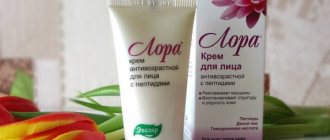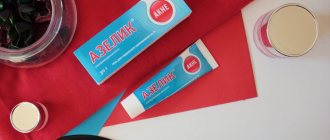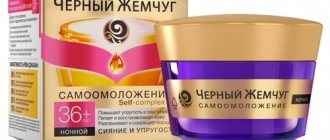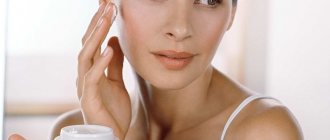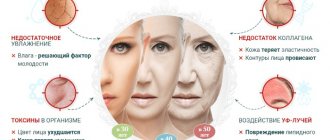Modern stores are full of a variety of different cosmetics. We don’t even know how to choose a face cream because our eyes are wide open. When trying to decide which face cream to choose, we focus on slightly wrong things: the popularity of the manufacturer, smell, cost, packaging. All this is also important, but not of paramount importance. In this article we will tell you how to choose a face cream and what you need to pay attention to.
How to choose the right face cream: types
A good product should perform several functions: cleansing, moisturizing and nourishing. First of all, you must understand why you need the cream, what problem it should solve. Sometimes one cream can solve several problems.
- Moisturizing - perfectly restores internal water balance. It is impaired if the skin is dry, flaky, rough to the touch, or even cracked. There is one important nuance: with prolonged use, the skin gets used to it and begins to produce less moisture;
- Nourishing - provides the skin with beneficial substances. They stimulate the appearance of new cells, promote regeneration and stimulate metabolism. As a rule, a well-chosen face cream will not only nourish but also moisturize the skin. But often manufacturers separate these two properties and create separate products;
- Cleansing - this can be not only a cream, but also a scrub/peeling. The latter contain abrasive (exfoliating) particles that remove dead skin cells. You should be very careful with them; if you overdo it (or the particles are too hard and large), you can damage or injure the skin;
- Anti-aging - contains components that slow down the aging process of the skin. If you already have wrinkles, the cream will prevent them from becoming deeper and more noticeable. The effect is cumulative, that is, in a week of use you will not see the result. Unfortunately, no cream, even the most magical one, will completely get rid of wrinkles;
- Sun protection - the name speaks for itself. These products contain components that reduce (or completely prevent) the harmful effects of the sun on the skin. You need to choose sunscreen for your face and body according to the degree of protection - SPF.
Ingredients breakdown
In the table below we provide a breakdown of the components in face creams. When purchasing, you can use this list to avoid dangerous or unnecessary ingredients.
| International name | Russian name | Description |
| Сyclohexasiloxane | Cyclohexasiloxane | Silicone that instantly creates a smooth, soft skin feeling. Does not provoke inflammation. |
| Karite oil | Shea Butter | Nourishing oil, contains a large amount of vitamin E. Non-comedogenic. |
| Magnesium | Magnesium | A macronutrient that improves blood circulation and complexion. |
| Glycerine | Glycerol | An inexpensive moisturizer that works only in the upper layers of the epidermis. |
| Limonene | Limonene | A natural preservative obtained from citrus fruits. |
| Argania Oil | Argan oil | An expensive and very healthy oil, it perfectly nourishes the skin and smoothes out facial wrinkles. |
| Aloe | Aloe extract | A natural ingredient that perfectly moisturizes the dermis, promotes the healing of microtraumas, and soothes. |
| Vitamin E, a-tocoferol | Vitamin E | Antioxidant, has remarkable anti-aging properties. |
| Propylene glycol | Pripylene glycol | A preservative, responsible for creating the texture of the product, in high concentrations it can be toxic. |
| Urea pura | Hydrolyzed urea | A powerful moisturizer that easily penetrates into the deep layers of the dermis due to its small molecular size. |
| Betaine | Betaine | A soothing component that forms a film on the skin and protects it from harmful external factors. |
| Lanolin Alcohol | Lanolin | A rather comedogenic substance, it often causes unpredictable individual reactions. Suitable only for very dry and chapped skin. |
| Sodium Hyaluronate | Hyaluronic acid salt | An excellent moisturizer that penetrates deep into the dermis. |
| Retinol | Retinol | Vitamin A, which is fat soluble. Fights wrinkles and other age-related changes. |
| Elastin | Elastin | Protein responsible for elasticity and firmness. |
| ANA | alpha hydroxy acids | Removes redness and acne marks, evens out facial tone. Cannot be used without additional protection from UV rays! |
How to choose a face cream: what to look for
Before you give preference to one or another product, you need to think about several things: your age, skin type and your other cosmetic products (there may be incompatibility and one cosmetic product will interfere with the work of another).
Which face cream to choose: age category
Each age category has its own composition in creams. A cream for a teenager and a woman 30+ will be very different in composition and effect on the skin. Our body is constantly changing: we grow, mature and age. Each stage requires its own care.
- The adolescence period is unique in that it is necessary not only to take care of delicate skin, but also to reduce the consequences of hormone surges during this unstable period;
- Young skin - from 18 to 25 years. During this period, our skin blooms and smells, that is, it does not need any special care. Choose a face cream that will moisturize and nourish - this will be enough. You should not look for creams with complex compositions and a huge variety of useful substances - the skin will get used to it and subsequently will not produce useful and nutrients on its own. This unpleasant fact will lead to skin problems in the future;
- The “25+” mark is the period from 25 to 35 years. The peculiarity is that you need to try to prevent the early appearance of wrinkles and improve blood circulation. Choosing the right face cream during this period is very important; pay attention to products with SPF filters (at all times of the year, not only in summer);
- Mature skin - after 40. During this period, the skin needs special care; nutrition and hydration alone are indispensable. To choose a good face cream and not make a mistake, look for collagen and liposomal substances in the product. It is worth remembering that no cream will return youth, no matter what the manufacturers promise. At this stage of cosmetology development, all we can do is slow down aging, but not reverse it.
Important: age categories are indicated conditionally. First of all, pay attention to the condition of your skin. Lifestyle, ecology and the degree of persistence of stress play a role here. A gap of 4-6 years is quite normal.
Which face creams are best to choose: look at your skin type
This parameter is no less important than age. If you choose the wrong remedy, at best you will not achieve the desired effect, and at worst, you will aggravate the problem.
- Normal skin - even color, lack of oily shine and large pores. If this applies to you, you are lucky. Choose the most common face cream to nourish and moisturize. It will be great if the composition contains collagen to prevent the appearance of the first wrinkles or smooth out existing ones. This does not require specific care, but you should not deprive it of attention;
- Oily skin - shine, constant acne, pimples and blackheads, enlarged pores. This type needs to stabilize the production of sebum (sebum), and this is done through hydration and nutrition. Give preference to light products with a matting effect;
- Dry type - peeling, dryness, feeling of tightness, early wrinkles. To choose the right face cream, look for glycerin and hyaluronic acid in the composition. Glycerin removes the feeling of dryness and tightness, and acid will prevent moisture from quickly evaporating from the skin and retain moisture in the cells;
- Combined type - several types mixed together. For example, oily shine in the T-zone and dryness in the cheek area. There are separate tools for this category. You can try to bother applying different products to a separate area.
It is very important to notice and understand the difference between dry skin type and normal but dehydrated skin. In the second case, dryness and a feeling of tightness will go away 30 minutes after washing. If this is your case, you shouldn't bother with choosing a face cream.
There is another category - sensitive skin. The owner of this type should especially bother to choose a high-quality face cream. You need to look for a cream with the appropriate mark - their composition does not contain a large number of allergens and aggressive components.
In any case, if you choose a completely new product, be sure to test it on the crook of your elbow before using it. This applies to any cosmetics, not just creams. We do not always know that we are allergic to one or another component of the composition (individual intolerance).
Each age has its own composition
You can’t use one single product your entire life. It should change and meet the needs of the skin at a given time. The cosmetics industry has simplified this problem by releasing several lines of products designed for different ages. But you should not blindly trust the manufacturers - always read the label, select the product solely based on its composition.
Withering processes begin after 25 years. The body stops growing, the mechanisms of recovery and intensive cell renewal slow down. At 35, the aging processes are gaining momentum, they are still practically not manifested externally, but it is necessary to wage a thorough fight against them from the inside. The skin is still smooth and attractive, but hormonal changes will "fix" its appearance over time.
At the age of 45+, fading becomes a clear problem, the oval of the face falls, the cheeks shift, the contours seem to blur. The process is intensified by rapidly changing hormonal levels. It's time to use the heavy artillery - products with an anti-age effect.
The purpose of face cream, the difference between night and day cream, how often it needs to be changed. All this in the video below:
Which face cream to choose: day/night care and skin around the eyes
Often we do not see any difference between day and night cream, only the inscription on the label is different. However, it is there and quite large: the day cream preserves youth and protects the skin, and the night cream nourishes, moisturizes and restores. In addition, the consistency of the night cream is thicker and greasy, so it takes longer to absorb. If you apply night cream during the day, there will be a very noticeable greasy, oily film on your face, which will ruin the whole look. Day creams, on the contrary, tend to mattify the skin.
To get the maximum effect from a night cream, you need to cleanse your skin of impurities and cosmetics and only then apply the product. During sleep, our muscles relax, and the skin becomes much more receptive to nutritional components.
Both creams should be chosen based on your age and skin type.
Advice: if you are under 35 years old, do not overuse night care. At this age, it will not do you much good, nor will it harm you. During this period, the skin itself copes with the production of nutrients; it does not need help. Young skin does not need them at all, as it completely copes on its own.
How to choose a face cream: skin around the eyes
This area of the face is especially sensitive and delicate, since there is no fat layer there. Special careful care with special products is required. Regular face cream will not work, as its structure and density are too high for the area around the eyes. Like regular products, they are divided according to problems: from dark circles and bags, from expression lines and so on.
Before choosing a good cream for the face (the area around the eyes), you should decide what problem you want to solve:
- “Bruises” under the eyes - lack of sleep and fatigue. Look for a product with a brightening effect;
- “Bags” - you need a cream with components that increase skin elasticity;
- Expression wrinkles - look for antioxidants in the composition.
Before use, be sure to test the cream for allergies, check the consistency and density. Pay attention to the speed of absorption - the faster the better. The composition may include such nutritional and beneficial components as: collagen, hyaluronic acid, vitamins and others. Caffeine and alcohol are best avoided as they dry out the skin. This unpleasant fact can lead to even more unpleasant wrinkles.
Price
Average cost of face creams:
- nourishing cream can be purchased at a price of 100-30,000 rubles;
- a cream with a mattifying effect will cost 80-8000 rubles;
- protective cream will cost between 200-5000 rubles;
- a cream with a tonic effect is sold at a price of 70-15,000 rubles;
- moisturizer can be bought for 130-24,000 rubles;
- creams with anti-aging effect cost up to 40,000 rubles;
- anti-wrinkle cream can be purchased at a price of 200-27,000 rubles;
- a cream that increases skin elasticity will cost 40-19,000 rubles.
How to choose a quality face cream: what to look for when purchasing
There are some other things you should know:
- A high price is not a guarantee of quality. There are a lot of products on the market with an average or even low price that will care for your skin no worse than expensive products;
- If you decide to try a new manufacturer or line, first use a sampler and test the product for allergies on the crook of your elbow. This will save you from wasting money. If an allergy develops, it is easier to throw away the sample than a full jar;
- Packaging with dispensers or tubes is much more economical than jars;
- The expiration date is very important - be sure to check it before every purchase! You should not use cosmetics that have expired - you can seriously harm your skin and develop a serious allergy;
- The consistency should be uniform (if we are talking about cream). It should not delaminate, there should be no oily films or liquids on the surface;
- If the cream has too strong a smell or an unnaturally bright/dark color, it is better to discard it. This means that it either contains too many different fragrances and dyes, or they are too “chemical”. It’s great if the cream has a slight smell and a milky white color.
Which brand do you prefer?
The table shows face creams from different manufacturing countries in accordance with the ratings in the cosmetology industry.
| Rating | Russia | France | Germany | Belarus |
| 1 | “Nutrition and hydration” from Natura Siberica | Hydrance Optimale by Avene | Q10 plus from Nivea | "Whitening cream" from Vitex |
| 2 | "Hyaluronic cream" from Librederm | "Sun protection" from La RochePosay | Kamille by Balea | "Cream Peeling" from Tea Line |
| 3 | “Cornflower + barberry” from “Clean Line” | UV plus hp from Clarins | Karotin by Afrodita | “Placental-collagen” from “Exclusivecosmetics” |
| 4 | “Lifting care” from “Black Pearl” | "Basic care. Moisturizing" from Garnier | "Intense moisturizing" from Nivea | AntiAge Expert from Vitex |
| 5 | “Night cream care” from “Clean Line” | Hydra phase Riche from La RochePosay | “Quince” by Dr.Hauschka | BOTOX LIKE SYSTEM from Belita |
| 6 | "Freshness and radiance" from Planeta Organica | Aqualia Thermal from Vichy | "Rose" by Dr.Hauschka | "Complex BB Cream" from Markell |
| 7 | “Olive” from “One Hundred Beauty Recipes” | Eluage by Avene | "Charge of energy" from Nivea | COMPLETE CARE by Markell |
| 8 | “For correction of facial oval” from “Kora” | "Liftactive Dermoresurs" from Vichy | "Moisturizing" from Nonicare | "Lifting" from "Eco-sapropel" |
| 9 | "Rosa" from "Nevskaya Cosmetics" | "Derma Genesis" from Loreal | "Rose Light" from Dr.Hauschka | Golden Age from Belit |
| 10 | "Chamomile and wheat germ" by Green Mama | Liftactiv Retinol from Vichy | Aqua Effect from Nivea | "Regenerating" by Liv Delano |
How to choose a quality face cream: what to look for in the composition
The composition is the most important thing in a product. If you use cheap and low-quality components in the manufacturing process, at best there will be no effect, at worst - allergies and aggravation of the problem. What should a good cream contain:
- The basis. It’s great if it’s natural oil: olive, jojoba, argan, almond, and so on. Avoid mineral oil - it is of low quality and harmful to the skin;
- Active nutrients: vitamins, collagen, various acids and so on. They are the ones that bring great benefits to the skin;
- Natural ingredients - the more, the better. If the cream is completely natural - ideal. But this does not mean that it may not cause allergies or may not be suitable for you. Be sure to check;
- Preservatives and dyes. You shouldn't be afraid of the first one - they help extend the shelf life of the product, that's all. Another question is what preservatives the manufacturer decided to use: natural or chemical? There are also different dyes, but they do not bring any benefit, nor much harm (unless they are made from pure, low-quality chemicals).
Now you know how to choose a face cream - what to look for, what to look for and what to avoid. Choosing a good product is quite difficult, since you need to know a lot about yourself, manufacturers and compositions. However, it is definitely worth understanding this topic. The right face cream is the key to your beauty and youth!
If you have normal skin...
... Then you can consider yourself lucky. The normal type is rare. You are lucky for the following reasons:
- your skin looks perfect - no enlarged pores, no rashes, no wrinkles;
- your skin is not afraid of allergies, rarely peels and produces sebum moderately;
- your skin ages slowly and is not hypersensitive to water and cosmetics.
Until the age of 25-30, the owner of this type can limit herself to basic care using a good day cream for normal skin. But no one has canceled the rules of this care. It is important to provide gentle cleansing, toning and moisturizing.

